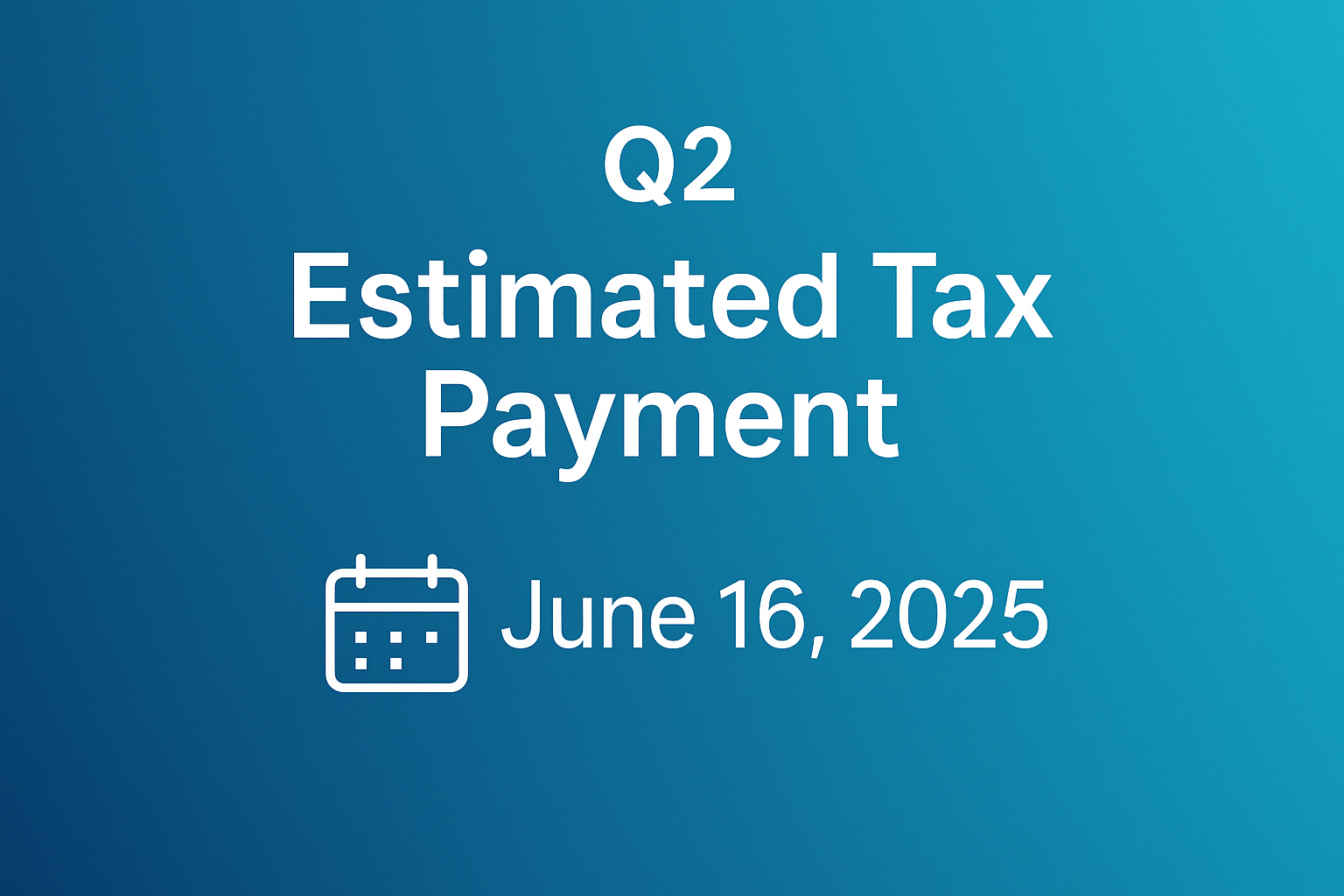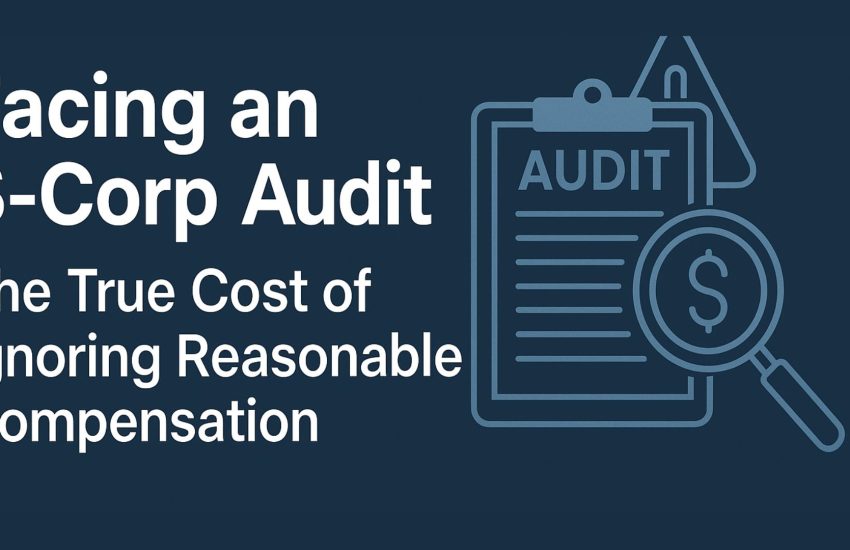Estimated Tax Payments: What You Need to Know Before June 16, 2025
Introduction
If you’re a business owner, managing your tax obligations throughout the year is key to avoiding surprises at year-end. One of the most important dates in your tax calendar is the second-quarter estimated tax payment, due Monday, June 16, 2025.
This post covers what you need to know, how to calculate your payment, and how to stay ahead of IRS penalties.
Why Q2 Matters
Estimated taxes are paid quarterly by individuals and businesses who don’t have enough taxes withheld from regular income. That includes:
-
Self-employed professionals
-
LLC members
-
S-Corp owners who take distributions
-
Side hustlers and freelancers
Q2 payments are based on income earned between April 1 and May 31. Staying on top of them helps:
-
Avoid IRS underpayment penalties
-
Prevent a large tax bill next April
-
Improve cash flow predictability
Key Deadline: June 16, 2025
June 15 is the standard due date, but in 2025 it falls on a Sunday—so the IRS deadline shifts to the next business day: Monday, June 16, 2025.
What to Do Now
1. Review Your Q1 Financials
Use your bookkeeping reports or P&L statement to get a clear picture of your net income through March 31.
2. Talk to Your CPA
A quick check-in with your accountant can ensure you’re on track. They’ll help you project your annual income and fine-tune your payment to avoid overpaying or underpaying.
3. Adjust Accordingly
If your income fluctuates—whether due to seasonality, new contracts, or slower periods—your estimates should reflect that. You don’t have to pay equal amounts each quarter.
What You Need to File
Individuals & Sole Proprietors:
-
Use IRS Form 1040-ES
-
Pay via EFTPS, IRS Direct Pay, or your state portal
Corporations:
-
Use IRS Form 1120-W to estimate installment payments
Benefits of Timely Payment
-
Avoid IRS penalties for underpayment
-
Even out your tax burden throughout the year
-
Protect cash flow by budgeting for taxes proactively
Common Pitfalls to Avoid
-
Not reviewing finances until Q4
-
Using outdated or static income assumptions
-
Forgetting about state-level estimated tax payments
-
Not updating payments after major business changes
Tools & Portals
-
IRS Direct Pay: https://directpay.irs.gov
-
EFTPS: https://www.eftps.gov
-
State tax departments for local payment portals
Final Thoughts
Estimated tax payments might not be the most exciting part of running a business—but they’re one of the most important for keeping your business financially stable and penalty-free.
Want help reviewing your Q1 numbers or submitting your Q2 payment? Our team at W E STEVENS PC is here for you.
Call us at (402) 932-8815 or visit our website to contact us.
Sincerely,
W. E. Stevens, PC
Serving you through a thoughtful client experience, wise long-term perspective, and very experienced staff



